The botanical name of Bharangi is Clerodendrum serratum belonging to the family Verbenaceae. It is used to treat various respiratory disorder, known as Shvasa Vaha Strotas Roga.
This plant is famously known as Glory bower. As per AYUSH medicine, Bharangi possess power of sun and so is considered auspicious to treat all disorders.
Bharangi has anti-inflammatory, expectorant, anti-allergic, carminative, sudorific characteristics for which it is used for the treatment of tuberculosis, asthma, jaundice, rhinitis, worm infections etc.
Certain characteristics of Bharangi includes

- Leaves of Bharangi are rough.
- The flowers are red in colour. In blossoms, appears as hot red coal.
- Bharangi is considered auspicious plant.
Have a look at aquilaria agallocha.
Different regional names of Bharangi
- In English: Glory bower, Beetle killer, blue glory, Turk’s turban moon.
- In Bengali: Bambunhati
- In Gujrati: Bharangi
- In Hindi: Bharangi, Babhanaiti
- In kannada: Gantu Bharangi
- In Tamil: kavali
- In Telugu: Gantubharangi
- In Marathi: Bharangi
- In Malayalam: Cherutekku
Get information about – Brassica Campestris Benefits
Expanding the meaning of botanical Name
Clerodendrum serratum Linn.
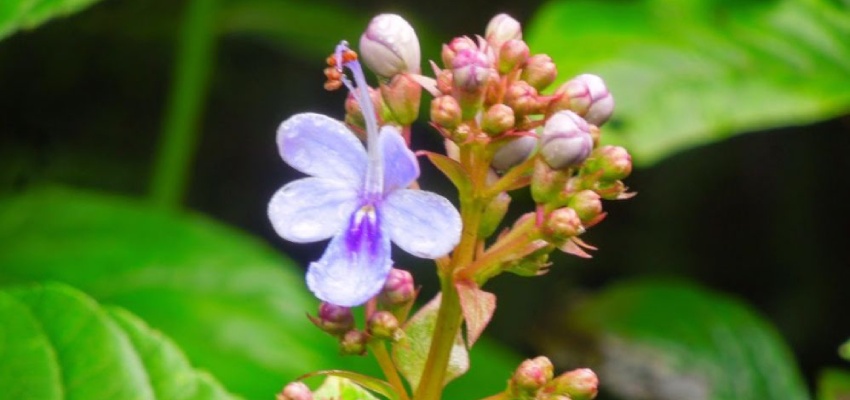
- Cleodendrum: Clero- chance, with uncertainty of medicinal properties, Dendron- shrub
- Serratum: means saw toothed margins of the leaves.
Here is Changeri benefits.
Scientific classification of Bharangi
| Kingdom | Plantae |
| Class | Dicotyledons |
| Subclass | Gamopetalae |
| Series | Bicarpellate |
| Order | Lamiales |
| Family | Verbenaceae |
| Genus | Clerodendrum |
| Species | serratum |
Explore more about – Amalaki
History
Bharangi is one of the ayurvedic formulations used in the treatment of respiratory disorder. Brihattrayi texts and Nigantu writers described two varieties of Bharangi that are Vaidyaka Shabda Sindhu (white flowered) and Nila Pushpa (blue-flowered).
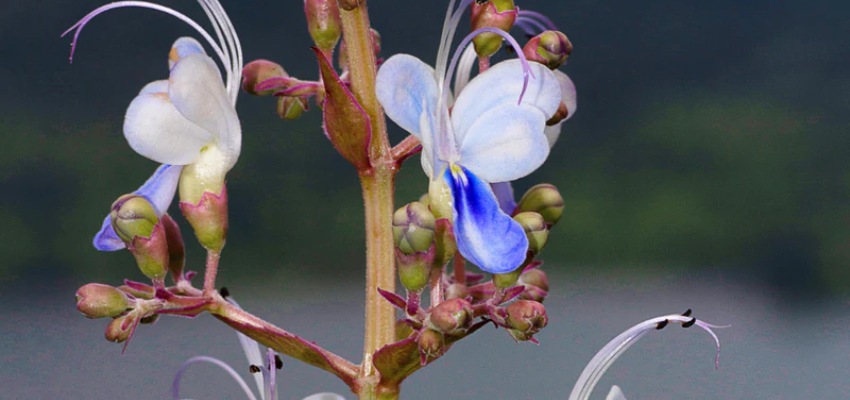
The ciological names of the mentioned varities are C. indicum and C. serratum respectively. There is third variety with name C. infortunatum with less properties.
You can also look at apamarga plant.
Chemical Composition
The root of plant contains –
- saponins, D- mannitol,
- stigmasterol, oleanolic acid,
- queretaroic acid, serratagenic acid,
- sitosterol,
- clerosterol identified as 5, 25- stimastadien-3beta o,
- clerodone as 3beta-hydroxyl-lupan 12- one,
- B- sitosterol,
- lupeol,
- A steroidal glycosides,
- phytosterols,
- ferulic acid,
- arabinose,
- scutellarcin,
- baicalein,
- serration
- ursolic acid.
You should also know – aragwadha plant.
Leaf of plant contains
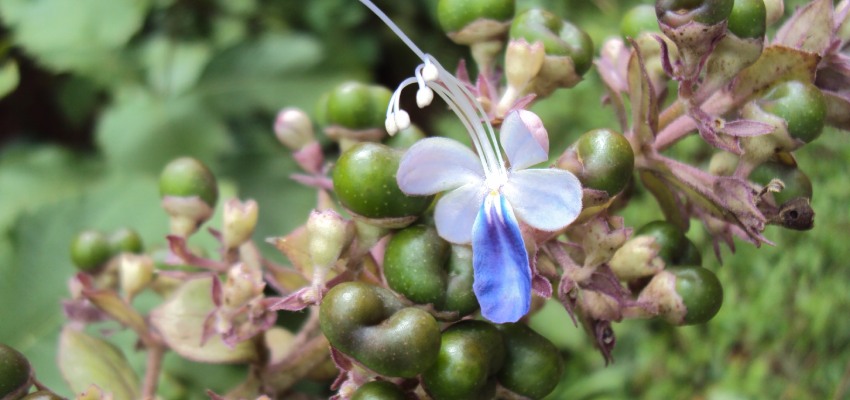
- CatChin,
- Alpha-spinosterol,
- luteoline,
- polyphonolics,
- diterpin-clerodin,
- ethycholesta-5,24 25-trine 3beta-o hispiduline
7-o-o gluconoids of hispidulin and cruteuarein
Read about – Pterocarpus marsupium
Uses
Bhavaprakasha Nighantu defines Bharangi in Haritakyadi varga is used in diseases like cough, oedema, asthma and fever. Priya Nighantu introduces Bharangi in Shatapushpadi varga is used in cough, oedema, asthma and coryza.
Dhanvantari Nighantu says Bharangi in Guduchyadi varga is used in cough, oedema and asthma.
- Wound healing activity
- Anti-asthmatic activity
- Antioxidant activity
- Anti-cancer activity
- Anti-inflammatory activity
- Spermatotoxic activity
- Anti-ulcer activity
Also read about – Aswatha plant
Botanical Description
Clerodendrum serratum is slightly woody shrub with bluntly stems and branches. This tree are about 2-8 ft high. It is annual or perennial and is usually aromatic.
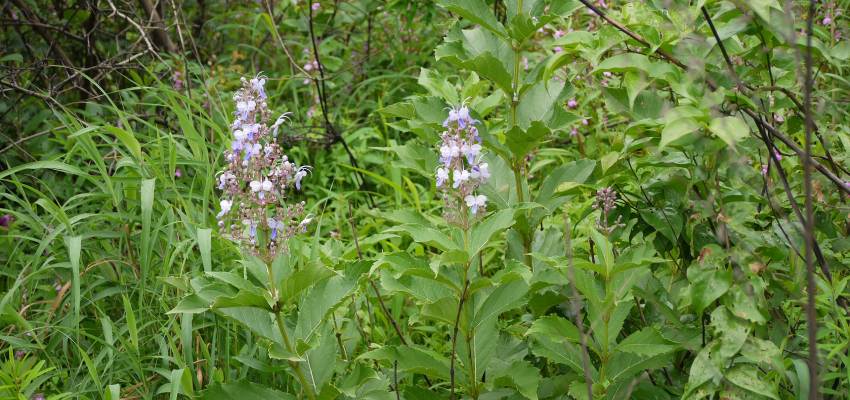
- Root: mature root hard, woody, cylindrical; upto 5cm thick, external surface light brown having elongated lenticles.
- Stem: usually quadrangular(four-angled)
- Bark: thin and easily separated from a broad wood which shows marked medullary rays and concentric growth rings in a transversely cut surface; short fractures; acid taste.
- Leaf: leaves usually three at a node sometimes apposite oblong or elliptic, serrate, alternate without stipules.
- Flowers: blue, many in long cylindrical thyrsus. They are bisexual, zygomorphic, rarely sub-actinomorphic, and bracteolate or not. Corolla with a slender tube, lobe-5, spreading; stamens epipetalous 4 or 2 free; anther 1 or 2 celled usually dehiscing longitudinally; disc persistent.
Ovary superior, 2 celled and each cell 2- ovuled and style sub-terminal and gynobasic. - Fruits: four lobed purple drupe.
- Seeds: with or without endosperm
Dose
- Root Powder : 3-6 grams
- Root kwatha : 10-20 g of kwatha curna
Also read – Ativisha plant
Pharmacodunamics
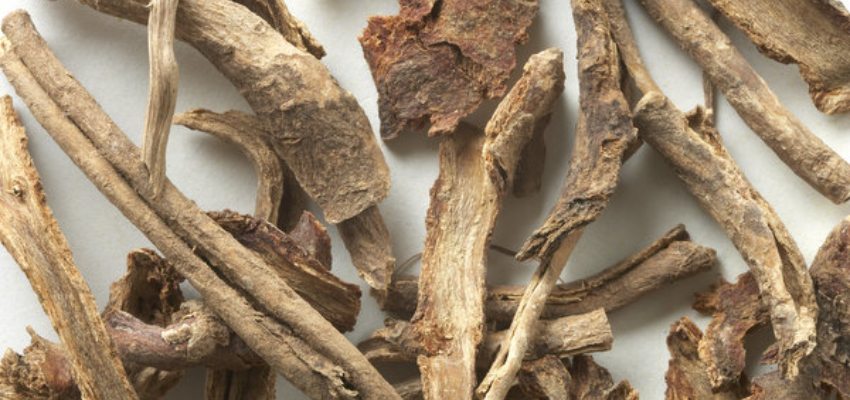
- Rasa : Tikta, Katu
- Veerya : Ushna
- Vipaka : Katu
- Guna : Ruksha, Laghu
- Prabhva – Krimighna
Note – Devadaru
Consoder reading –